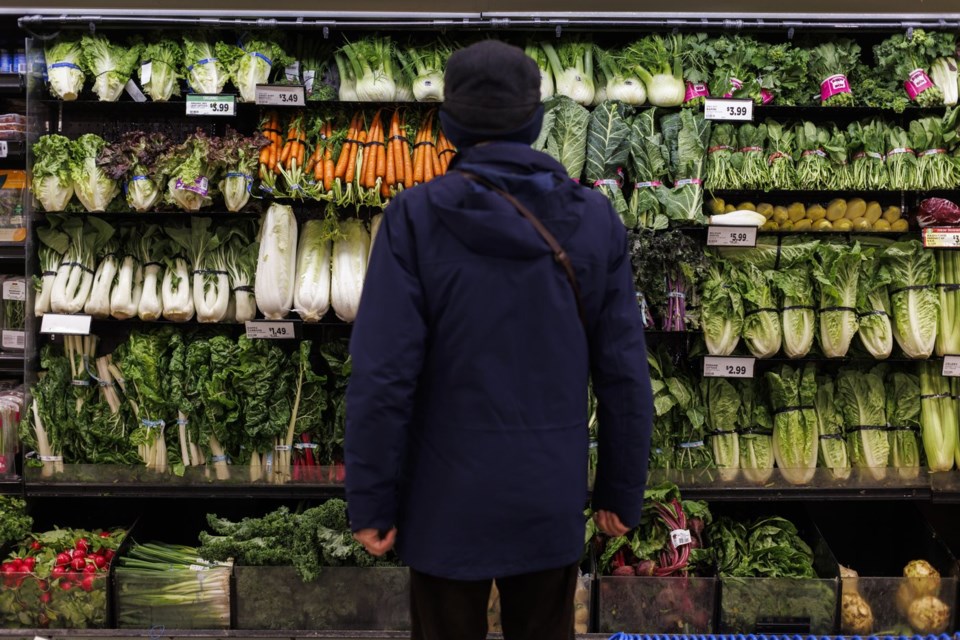Higher grocery prices continue to wallop Canadian household budgets, with food inflation ticking higher in May for the first time in nearly a year.
Statistics Canada reported Tuesday that grocery prices rose 1.5 per cent in May, slightly higher than in April when they rose 1.4 per cent. It marks the first acceleration in grocery prices since June 2023.
While the May increase was modest, it comes on top of already elevated grocery costs in Canada.
Overall, food prices are up 22.5 per cent since May of 2020, Statistics Canada data shows.
The result is that food costs remain a significant drag on the consumer wallet, said RBC Capital Markets analyst Irene Nattel.
She added that the latest food inflation figures make it unlikely that consumers will give up their bargain-hunting behaviour, such as seeking out discount brands, promotions and sales.
"That 22.5 per cent food price increase since May 2020 is a significant headwind to household budgets and likely to sustain value-seeking behaviours," Nattel wrote.
On a month-over-month basis, Statistics Canada says growth in May food prices was driven by higher prices for fresh vegetables (up 3.5 per cent), meat (up 1.3 per cent), fresh fruit (up 2.2 per cent) and non-alcoholic beverages (up 2.4 per cent).
The monthly increase in meat was largely the result of higher prices for fresh or frozen beef, amid high demand and tight supply, Statistics Canada noted.
A new survey by Lightspeed Commerce Inc. found rising food prices is also affecting the way Canadians dine out — from tipping less to seeking out happy hour specials.
The survey of 1,500 respondents in Canada found seven in 10 diners report noticing rising prices at restaurants over the last year.
Four in 10 noted their favorite dishes are shrinking in size, a phenomenon commonly referred to as "shrinkflation."
However, the Lightspeed survey found 44 per cent of respondents still expect to continue dining out in spite of cost pressures.
Kelly Higginson, president and CEO of industry group Restaurants Canada, said the combination of rising operating costs and weaker consumer spending is a "one-two punch" for restaurant operators.
"They really find themselves at a challenging crossroads, where they're contemplating raising menu prices to offset their high food costs and other inflationary pressures, but they also have significant and well-founded fears that this going to discourage people from visiting," Higginson said in an interview.
The Lightspeed Commerce survey points to an uptick in money-saving behaviours. Thirty-nine per cent of restaurant-goers said they are hunting for deals with coupons, 33 per cent are choosing value meals, and 26 per cent are making the most of happy hour specials.
Twenty-five per cent of Canadian respondents also said they are tipping less in an effort to control the cost of eating out.
"We're seeing all sorts of different changes in consumer habits, but at the end of the month, it's our operators that are really paying the price," Higginson said.
This report by The Canadian Press was first published June 25, 2024.
Companies in this story: (TSX:LSPD)
Amanda Stephenson, The Canadian Press



